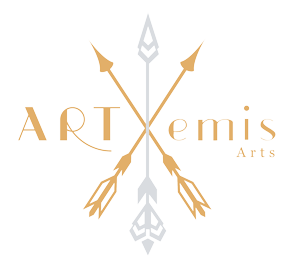
Women on the Verge: Volume Eight – Modification and Presentation
No one religion can console this enormous country.
No single philosophy convince it.
No therapy relieve it of its burdens.
No legal system comfort its injustice.
No medicine deliver it from pain.
No government give it joy.
Only art does that.
playwright Romulus Linney
NOTE: Before reading this posting, please make sure you’ve read Women on the Verge Vol. 4, which outlines the entire creative process. Otherwise, the following may be confusing, rather than helpful.
Modification and Presentation
You are on the VERGE of bringing your fully imagined work into being and, possibly, putting it out into the world. Modification and Presentation are the final two stages of the creative process to be outlined in this blog. Whether on the screen, in the studio, or at the keyboard, you arrive at this point, once you have self-assessed the gap between your intention and what you have before you. If there is no gap that would come under the phenomenon known as a “miracle.” Many a new writer – so excited that the hard work is finally over — has mailed her (beloved) first draft off to a publishing house. Then waited by the phone like a dateless teen on a Saturday night. This blog aims to prevent that.
Stage Six: Modification
Back to the drawing board! Based on your Self-Evaluation (Stage Five), change is in the air. At the beginning of Stage Six, the gap is too significant to ignore. With each change you make – if you’re going in the right direction – the gap should shrink. If, as you work a piece, the gap grows larger, this is still information you can still use. It’s an indication the project needs to be re-thought at a deeper level, instead of expanded or carved up out of desperation. It could eventually become something entirely different than you imagined, yet closer to authentic or satisfying. Each attempt to alter a work is an experiment; some attempts will be successful, others not-so-much. Keep asking: What is my intention? Is that still alive in this piece?
There are specific attitudes that are needed during this stage. If you recognize you have a deficit in any of these, use your support network to bounce off concerns and seek help shifting your perspective and re-crafting your vision. Find artists who have had similar challenges and swap ideas for staying in the studio, when feeling discouraged. Don’t underestimate the value of asking an eight-year old. Read previous postings of this blog in order to find tools from earlier stages of the creative process that might help now. The most important skill at this point is your ability to manipulate unfamiliar forms or material(s). Seek advice: mentor? writing group? art store clerk? retired dancer?
ATTITUDES/Cognitive Abilities:
-
a willingness to do whatever is necessary to advance the work
-
cognitive flexibility, especially a removed, analytical eye
-
tolerance for discouragement
-
determination and persistence
-
self-discipline to stay on track
-
ability to rethink and redirect energy without losing focus
-
a relationship with time (time-management) that encourages you to create space for inevitable problems that will arise (rather than waiting until crisis mode).
-
anticipating problems that might develop; having solutions sketched out
You will visit the drawing board over and over. For creatives, who are comfortable with mistakes and regard them as guides, this can be is one of the most pleasurable stages of the process: They embrace with curiosity each step into the unknown as they craft something closer to their intention. Those most challenged, here, are perfectionists and the risk-aversive. These artists can unveil amazing work, technically speaking, but it may lack soul or the power to excite. Making successful modifications to correct this gap isn’t possible, when a work is self-regarded only as a success or a failure. This is polarized thinking; all or nothing. And it’s the opposite of what you actually need.
Tool #
Instead, consider thinking in terms of a continuum: Picture your finished project in as much detail as possible. Then imagine three outcomes, and describe what would happen within each of these: a highly successful outcome (your best fantasy); asatisfying outcome (less than you had hoped for, but you remain inspired and not discouraged); and a disappointing outcome (not at all what you had hoped for, but an opportunity to learn). Even a disappointing outcome provides an opportunity to be courageous and critiqued. So the next time you will have more practice under your belt, and the process won’t be so threatening. This continuum will serve you well, because there is no failure option.
At some point your project feels “ready,” but you might not be. Dip your toe into the water anyway. If your intention, as an artist, is to impact another human being, you must eventually put your work out there to be experienced by others.
Exactly when to let go is not fixed. One of my mentors taught me not to think of completion as a single act: This will create half-finished pieces and false-starts. Any creative work is completed many times; each piece is a series of completions. When you release it, that doesn’t make it complete. That only makes it delivered. It will continue to beckon in the middle of the night. There is always something you think might improve it, because time brings new ideas. You are not, today, the same person who created the original work. This is why I recommend storing — rather than destroying — a project that’s stuck in “almost there” too long. Sometimes it will finish itself in your absence. When you revisit, it may even whisper its solution in your ear.
I read a quote once (maybe Martha Graham). “A creative work is rarely finished. It simply stops in an interesting place.” Hand your “finished” piece to someone else to work on, and it gets a whole new life! You could keep making changes on your current project well into eternity; every time you revisit it, you re-engage. So, knowing when to let go – and not overwork it – is an art in itself. Part skill. Part gut.
Stage Seven: Presentation
(Public Evaluation)
You’ve decided to put your work out into the world. What was once private will now be available for the scrutiny of others. This moment is both exciting and terrifying; it’s what you’ve been working toward, as well as, what you’ve been dreading. It could be an individual critique from an instructor, editor or casting agent. It could be an installation in a gallery or performing before an audience. Or, it might be as intimate as watching a loved one reading your short story. The response might be beyond your wildest dreams, or it might leave you questioning your talent. This is a high-wire moment. To take advantage of this opportunity, you will need to bring certain attitudes and skills to the suggestions, opinions, reviews etc. that your work triggers in others.
ATTITUDES:
-
ability to separate “self” from “product.” (You are NOT your art. Your art is an extension of a highly-complex, flawed, creative human being. If someone does not like what you’ve drawn, sung, written, photographed or built, that does not mean they don’t like you. Resist the impulse to tell them how long you worked on it, and how difficult the process was for you. No surprise: art and suffering are synonymous. More importantly, that won’t change how they experienced it.
-
ability to manage anxiety. If you struggle with this (even on a good day) get out in front of it, before you begin a project. Reach out to professionals, so you’re better equipped to meet deadlines and handle both positive and negative feedback.
-
have your support system in place; like-minded artists and other folks who “get” you and provide a buffer when you need it. Make sure these are people you trust.
-
resilience (to bounce you back from negative criticism).
-
determination to succeed (which requires learning from your mistakes)
-
courage. Don’t wait until you’re not afraid. That could take a lifetime. Instead, put your work out there, fearfully. Courage comes from only one thing: surviving fearful moments. Again and again.
Block #1 “Eleventh Hour Panic”
No matter how hard you’ve worked, you fear it is not enough. All you can see are flaws. You move into a defensive posture, unable to appreciate feedback, much less use it. (If you were raised to please others or you need approval, your inner critic is now running the show, when it should be run by the inspired, creative you.)
Tool #1
Assert yourself. Don’t just dodge the ball, return the serve! Actively step into the process and participate. Don’t let anyone do a “drive-by” (whether online or in person). If a statement is global — “I like it, I guess.” – ask a specific question, “What do you like about it?” Global responses are of no help unless you are counting “likes,” (which is meaningless unless you’ve entered your project into a popularity contest.) If someone offers, “Your interpretation doesn’t feel fresh to me.” Immediately follow up with an ego enhancer: “That comment intrigues me. Is that something you’ve witnessed before with the same subject, or is it only about the choices I made?” If someone mumbles, “I just didn’t get it,” then ask, “At what point did you stop being interested?” Make the person giving you feedback DO ALL THE WORK. Ask yourself: Is that an opinion or a fact?
If an opinion, how much do I respect the source of that opinion? (If it’s an artist in your own medium, that’s better than a stranger’s tweet. Or Uncle Moe after six beers.)
Tool #2
Sort useful critical feedback from not useful. Excellent feedback will often shine a light on exactly why a piece isn’t working. Useless criticism can leave scars; it can be abusive and insensitive. Unprofessionally done, it is directed to the artist instead of the art. Sometimes it’s inaccurate and confusing, which is irresponsible. ALWAYS CONSIDER THE SOURCE. Just as useless is nothing but positive comments. A balance is the most helpful, if you want to grow. You need to hear the “truth” – whether mind-blowing or heart-breaking — if you are going to grow as an artist. A tactful truth-teller will do more for a professional career than all the praise of friends and family. (If you create as a hobby, with little desire to grow, then critiques will not be a necessity.) Find yourself the target of unsolicited negative comments? Simply say, “You’ve given me something to think about.” or “I never heard that before.” Period. (That doesn’t mean you actually have to consider it, but it makes it hard to corner you into an unwinnable debate.)
Finally, because language, alone, can trigger anxiety, consider a paradigm shift: Again, change your perspective from absolute (good/bad) to thinking along a continuum. “I failed again!” will stop you from creating. “That didn’t work out as well as I wanted to,” keeps the process flowing, as it openly implies a next step
Questions to Consider
1. What do I hope for? What is my intention? How does that fit on a continuum?
2. What is my strength? How do I showcase that when an opportunity opens up?
3. Does this work make a statement or ask a question? How have I revealed that?
4. Is this work a good example of my talent? If not, specifically why not?
5. Where is risk/innovation evidenced in this work?
6. What question do I fear the most from a critique? How can I prepare for that?
